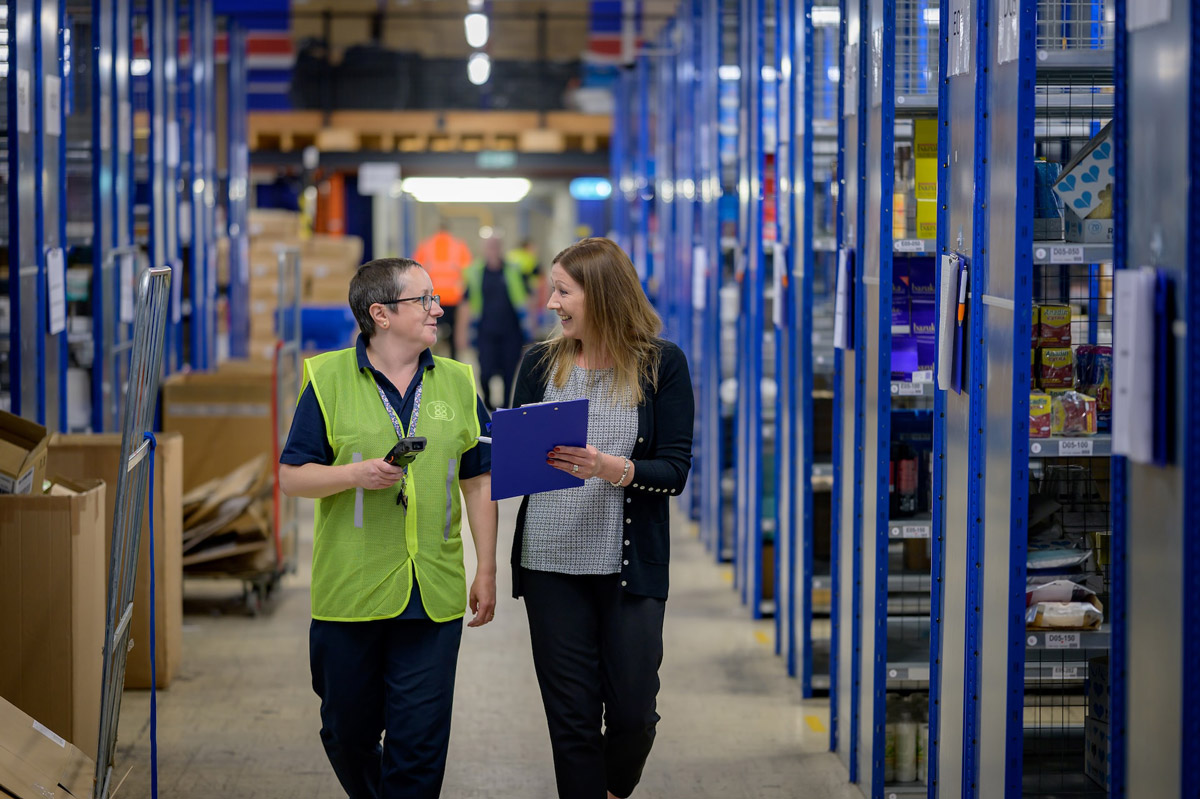
It’s always useful to know about injuries your employees are at risk of to better work to prevent them. As a result, we have prepared a guide on the most common warehouse injuries. As well as some suggestions on what you might be able to do about them.
Slip and fall injuries
Out of all common warehouse injuries, few are as frequent as slip and fall accidents. They happen so often because of how diverse their causes are. After all, even if you do everything right, your employee might end up just tripping over their own feet and getting a fall injury. Still, this doesn’t mean you should stop putting in the effort to prevent them! Proper warehouse management during winter is, for example, critical to prevent the worst fall injuries. You might not be able to prevent them, but stopping the worst-case scenarios and what could be fatal accidents is still essential.
Dropping heavy items
As the experts from Verified Movers can attest, the second most common warehouse injuries are those sustained from dropping heavy items. They can be anything from bruises to fractures and full-on bone breaks. Again, though, it all comes down to human error. And it is impossible to eliminate human error from a workplace entirely. That means that the best you can do is equip your employees with protective gear and hope nothing goes wrong. It is also helpful to instill in them that one person should never try to move something too heavy. That is because a lot of these injuries happen because of such behavior.
Stacking too high
The next set of injuries happens when there’s a problem with yourpalettesees' palette or when they stack goods too high. The problem is that deaths can occur if they carelessly do this. Stuff falling on top of you is a surefire way to at least earn a few broken bones. If the goods are particularly heavy or stored in large wooden boxes, death is often instant due to the blunt trauma damage. If you want to prevent accidents in your warehouse of this type, ensure that stacking height regulations are well-known and adhered to.
The dangers of overexertion
Another set of common warehouse injuries happens due to overexertion. Here, your employees might end up suffering pulled or torn muscles, ligaments, and other vital bits of anatomy that are best never damaged. The problem is that these injuries often sneak up on you. You might be completely convinced that you can lift something safely. But due to the bulkiness of the item or awkward positioning on your part, something goes wrong, and you are on the floor in pain. Training your employees on how to lift heavy objects properly and insisting on them doing it in pairs or small teams for particularly heavy packages is good. It will eliminate a lot of these injuries. But it will never prevent them entirely.
Getting limbs caught between things
Working in a warehouse is frequently a chaotic experience, and things sometimes happen in a hurry. After all, time crunches are frequent since trucks need to be loaded or unloaded quickly to meet their delivery schedules. That does lead to mistakes. One of the most common warehouse injuries that happen as a result is pinching your fingers and toes between things. Whether it’s between the ground and the box when trying to put it down or between boxes, squeezing a part of your body under a heavy box can lead to severe consequences. If the object is heavy enough, it can even sever fingers. That is why it’s essential for your employees to always wear gloves and other safety equipment.
Frequent repetitive stress injuries
Since working in a warehouse requires a lot of repetitive work, stress injuries are common. After all, you can’t precisely rest your back effectively if you need to lift and then set down twenty to thirty boxes in ten minutes. And the task frequently repeats throughout the day. Joint injuries, muscle strain, and carpal tunnel can plague your employees.
Mishandling the forklift
Some of the most severe common warehouse injuries happen due to improper handling of forklifts. These injuries are also frighteningly frequent since warehouse employees are frequently in a hurry and tend to disregard some safety regulations. Since a forklift is a serious piece of equipment, mishandling it can result in broken bones, severe head trauma, a broken spine, or even death. Proper logistics professionals must ensure that their employees are sufficiently trained and understand the necessity of following safety regulations.
Chemical burns
The last on our list of most common warehouse injuries are chemical burns. Thankfully, they barely make it onto the list, so they are rarer than the rest. These also only happen in warehouses that handle dangerous materials. Unfortunately, they can be as deadly as forklift accidents. They are a prime example of why you must provide your workers with proper training. Beginner workers handling hazardous materials is a recipe for disaster and will almost always end in tragedy. It is also essential to understand that the way you handle a chemical burn depends on what caused it. Sometimes, trying to wash off the wound frequently will only result in even worse effects. So, additional training is required for handling chemical spills and injuries that can occur from them.
Preparation goes a long way
Knowing about the most common warehouse injuries, you’ll be able to come up with more effective ways to prevent them. Of course, the bulk of the responsibility eventually rests on your employees. If they refuse to follow the rules you set to protect them, all your preparations go to waste. Still, since it is in their best interest to do it, you will find that the number of injuries in your warehouses will plummet with proper training and preparation.
For over 30 years, 18 Wheels Logistics has strived to be the most customer-centric trucking, warehousing, and logistics company around. Based in Vancouver, British Columbia, Canada, 18 Wheels relies on experience and integrity to make customers happy and remain on the cutting edge of shipping and logistics management.
If you have any questions about this article or you would like to talk to us about your shipping needs, please call us at (604) 439-8938.
